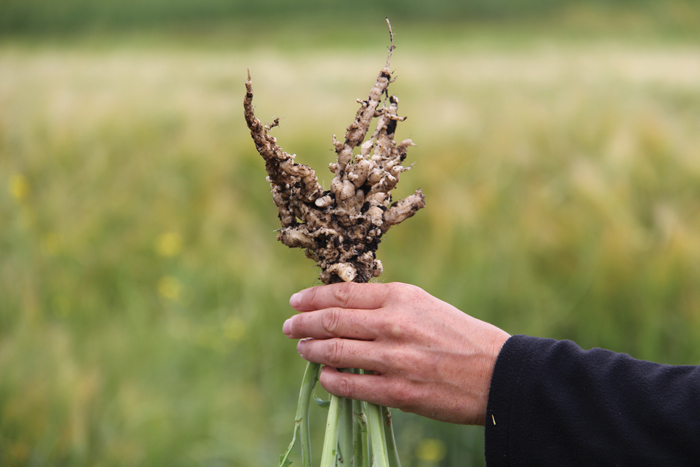With clubroot resistance breakdown confirmed in one Alberta canola field — and likely in others — a four-year rotation has become even more critical, even though it won’t stop the spread of clubroot.
“Rotation isn’t going to get rid of the clubroot out of the field,” provincial oilseed specialist Murray Hartman said of the field where a resistant strain of the disease was found.
Long-lived clubroot spores make the disease impossible to eliminate entirely from the soil, said Hartman. Longer rotation will help reduce the spore numbers, but its real value is maintaining resistance.
Read Also

Hail research hopes to benefit potato growers
Alberta research scientist measures hail storm and heat dome affects on potato crops
“There’s only one set of resistance that’s useful right now — you want to have that stay as useful as long as you can until we get other sources,” he said.
“The only way you can do that with resistant sources is if you don’t expose it frequently to high numbers of the spores.”
Repeatedly growing resistant varieties can cause the disease pathogens to “shift” and resistance to break down faster, he said.
“If you want to cause that shift in the pathogen, you grow canola every year with that resistant variety on soils that have got billions of spores. You’re going to get a very quick breakdown.”
Growers in some parts of the world have seen resistance begin to break down after just two crops. But with a four-year rotation, resistance should last a decade — time that would allow for new resistant varieties to hit the marketplace, said Hartman.
“It should have given us about 10 years before the resistance started to fail,” he said. “It didn’t take 10 years.”
And producing the next round of resistant varieties won’t be easy, he added.
“We might get the resistance, but we won’t get the agronomically great varieties — not like 45H29 was when it came out of the gate,” he said.
“And even if we come up with a new set of resistance, we can’t assume it’s going to be durable for more than two or three crops either.”
Until new resistant sources are found, maintaining existing ones will be critical, said Hartman. One of the ways producers can do that is by growing resistant varieties “before you have a problem on the field.”
“It’s a bit like vaccinating that field. You have the resistant varieties so you don’t get clubroot patches started in the first place.”
But producers still need to avoid putting pressure on the resistance in those varieties, he said.
“When you’ve got an infestation on a field, don’t grow the resistant (varieties) more than once every four years — not to make the disease go away in the field, but to keep that resistance there until we have other sources that are available.”















